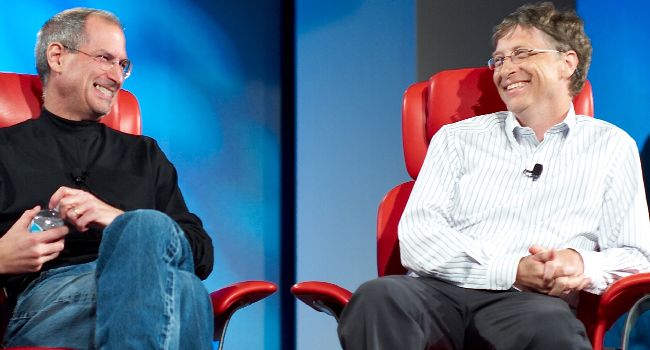Operating systems. This sounds like an incredibly boring topic — but in today’s technological society they are an essential part of our daily lives, even if they go largely unnoticed. (Until they go awry, of course.)
No ad to show here.
Operating systems are the holding device for every programme you run on your computer and being able to navigate your way through one is essential to your daily computer usage. There is nothing worse than an operating system that is clunky and unintuitive. Okay, there are worse things, but if you’re a techno-geek, having to battle with the very framework of the system to get anything done is a nightmare.
With this in mind we have compiled a list of device operating systems (in chronological order), desktop and portable, that you should avoid at all costs. Operating systems have to a large extent been around since the birth of computers, but I’m going to focus on those that have disappointed us dismally in the last 30 years.
MS-DOS 4.0 (1988)
Anyone born in the eighties who grew up with a computer probably used MS-DOS. Early versions were actually pretty decent, but there’s always one daft bugger who spoils it for everyone. In this case it was MS-DOS 4.0. It has a Graphical User Interface (GUI) and supported a mouse, but it was characterised by bugs and compatibility issues. Stability? Don’t count on it. Programs would crash right as you were in the middle of something important. In a prelude to the Blue Screen of Death (BSOD), everything would freeze for absolutely no reason whatsoever. The smart users of course rolled back to MS-DOS 3.3, to save both their work and their sanity.
JavaOS (1996)
Yes, this was a thing. What a bloody stupid idea. Nowadays we all know Java for its persistent updates, but to a large extent it runs mostly in the background. JavaOS however was primarily intended for running PDAs — that’s Personal Digital Assistant, not Public Display of Affection. Sun Microsystems tried to create an operating system that ran exclusively on Java as opposed to most operating systems, which are primarily written in the C language. Unsurprisingly it was painfully slow, would freeze constantly, and wouldn’t even let you dream of multitasking. Released in 1996, it was already discontinued by 1999, and considered to be “legacy software” by 2003.
Windows ME (2000)
Never before and never again (so far at least) has there been such a piece of shit as Windows ME. ME, short for Millennium Edition but marketed as being pronounced “Me” (yeah that really took off didn’t it?), was released in 2000 as the supposed successor to Windows 98 SE. It was lovingly referred to by many users as the “Mistake Edition”. Frequent BSOD crashes, program installation issues, problems with driver detection, System Restore that at times restored viruses that had already been detected and removed – the list just goes on. It was so resoundingly crap that Microsoft released XP just a year later and didn’t even bother trying to fix its predecessor.
Lindows (2001)
http://www.youtube.com/watch?v=nElnxm7Ls4Y
Windows Vista (2006)
Symbian OS (2012)
And so…
The fact that Microsoft occupies the majority of this list is yet another reason that I rarely upgrade the operating system on my PC until a good two years or so after a new version is released. In the rush to release something bigger and better it seems that completely reinventing an operating system is a rather hit-and-miss process. Does this make me inherently grumpy? Yes perhaps, but I would rather wait until the hundredth iteration of a Service Pack is made available in the hope that the developers will perhaps, maybe, possibly have ironed out most of the bugs. Of course that doesn’t help when the design is just bloody stupid.
